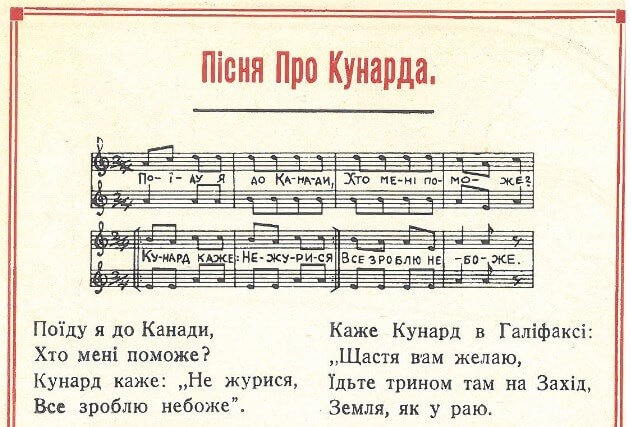Immigration was and is a serious business and, in its day, Cunard Line was in the immigration business.
Take this Cunard Line brochure for example. Published in the late 1920s in Ukrainian, it offers an insight into the company’s thinking about services. Cunard Line, an Anglo-American steamship company, had offices in every major Canadian urban centre, including Winnipeg (270 Main Street) and it had a Ukrainian Department with Iwan Boberskyj (1925-1932) as its head.

Cunard Line indicates that the company will prepare, at no cost, all the necessary immigration documents – applications, affidavits, permits, among others. It also offers advice about traveling across the ocean and how to send money to the Old Country. The brochure provides a map of Canadian National Railway lines from coast to coast and branch lines in every province so that new immigrants can locate their destinations.
A quaint entry in the brochure is a “Song about Cunard” written in Ukrainian by Ivan Shevchuk, a farmer in Bon Accord, Alberta. It has 10 stanzas to be sung as a Ukrainian ‘kolomeyka’. The song describes the arrival in London, Liverpool, Halifax, and finally in Winnipeg, praising Cunard for its generosity in helping new immigrants.
It must have been reassuring to early Ukrainian settlers that information about coming to Canada was available in Ukrainian. A cynic might comment that Cunard was only “looking after business”. It was, nevertheless, “smart” business and very useful to the immigrants with minimal or no English language skills.


